Water and Wood
August 2023 - Big Spring & Warm River Spring, Idaho #55-2023
NATUREDISCOVERIES
AL
8/21/2023
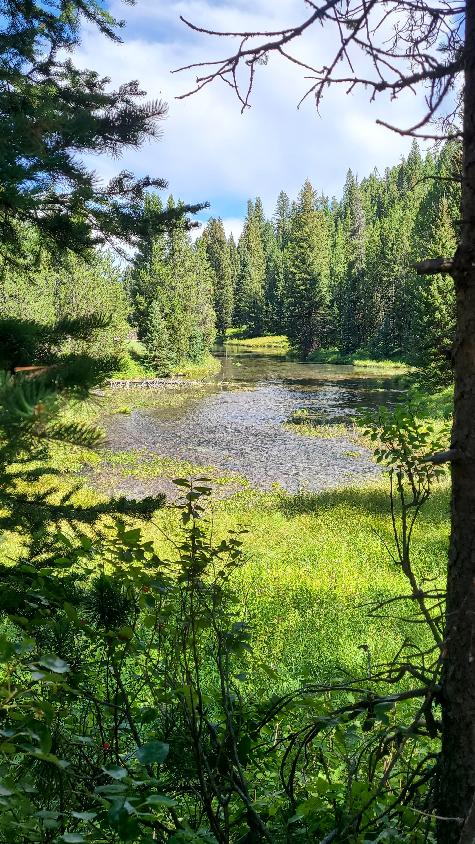

We set out on a day of adventure in eastern Idaho, trying to make the most of the beautiful, sunny weather we now had. We had many stops planned for this day of traveling the scenic byways near Island Park. We will share a couple with you today and save a few for later.
The first stop was Big Springs, which is an amazing natural feature. The spring flows out of the surrounding hillside from multiple directions, forming a large pool of water on the east side of the bridge before becoming one of the sources of Henry’s Fork of the Snake River. Its flow rate is such that it is in the top 40 of all springs in the U.S. Big Springs is a first-magnitude spring by definition since it produces over 120 million gallons of crystal-clear water daily. That is almost 2 trillion cups of water a day. The spring water maintains a constant 52° year round. I was impressed that the water is so clear, the bottom of the pond is easily seen, and the flow is so noticeable that you can see the vegetation in the water bending to the current. Cassie was unimpressed with the water, but Suki lapped it up from the shore. We saw several large trout swimming around near the bridge. They thrive in these ideal conditions, but fishing is not allowed until several miles downstream. There are trails along the water where you can see a lot of wildlife. A campground now sits adjacent to the spring, replacing the multiple vacation cabins that used to be here. The only cabin remaining is the one that belonged to Johnny Sack.
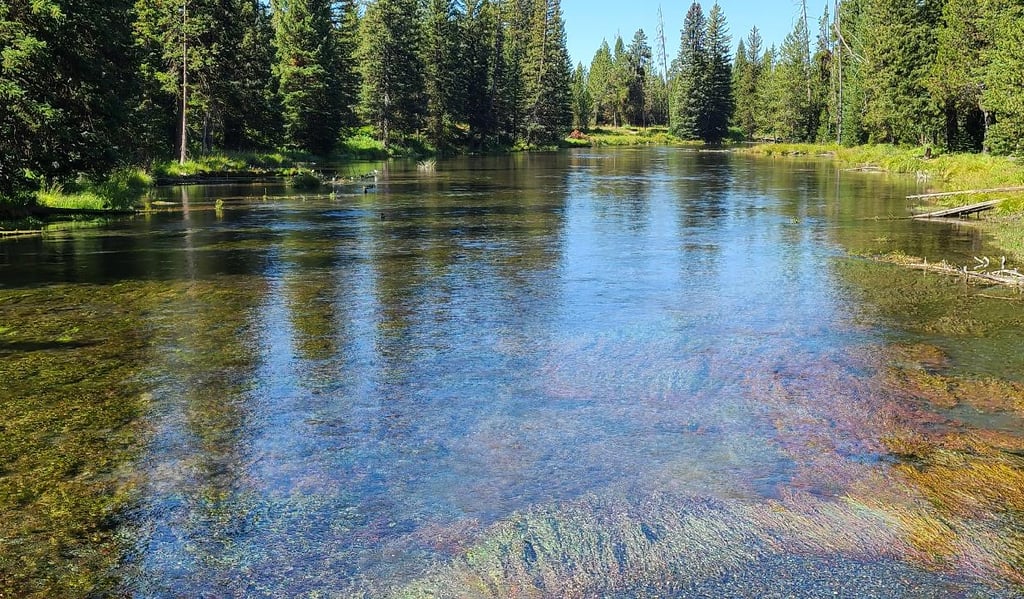

Johnny Sack was only 4 foot 11 inches tall, but he left a much bigger imprint on this area. He moved to America from Germany with his parents and brother and sisters, originally settling in Indiana. He moved to Idaho with his brother in hopes of becoming ranchers and raising cattle. They worked for various ranchers for several years before Johnny began to make his living building furniture and cabins utilizing skills learned working for the Studebaker Wagon Corp. He started building his cabin in 1929, after leasing land from the federal government for the amount of $4.15 per year. It took him 3 years to build it and he lived there until his death at age 73 in 1957. He welcomed people into his home and loved to show them around. He was the only resident to stay over the winter in Big Springs, and used skies and snow shoes to get to town. The other cabins that were built here were only vacation homes.
His cabin was built in the bungalow style, with a stone foundation, log walls and beams. He took the wheels off his old Buick to use the drive axle to help lift logs into place while building his cabin. His carpentry skills are on display with the planed bark decoration used throughout the cabin for cabinets, trim, furniture, and lighting fixtures. The only wood not from the area is the oak used in the floor, which he did in a quilt style, honoring his mother, a quilter. He built a large stone fireplace in the center of the cabin, which would surely provide plenty of heat on the cold winter days.
Electricity was not yet available in this area, but Johnny was pretty certain that it would be coming soon, since Yellowstone National Park was getting more popular. So he planned for it, making provisions for the wiring to be hidden in the walls and ceiling when it did become available. Most other cabins in the area did not do this and their wiring had to be surface mounted on the walls and ceilings.
He also built a water wheel down by the pond for pumping water, giving him water for the kitchen. He never had a bathroom in the cabin, only the log outhouse that is just a few feet away up some stone steps. The water wheel lifts the water up to a tank that sits high on the hill. He also used the water wheel to create electricity.
He never married, saying a wife would only want to cover his picture windows with drapes and his beautiful floors with rugs.
The cabin was slated to be removed since it was on land leased from the federal government, but local citizen prevailed. Because of its unique construction and colorful history, they managed to preserve it, placing it on the National Register of Historic Places in 1979. He would probably be both flabbergasted and delighted to know his cabin is one of the most visited and photographed places in this area of Idaho.
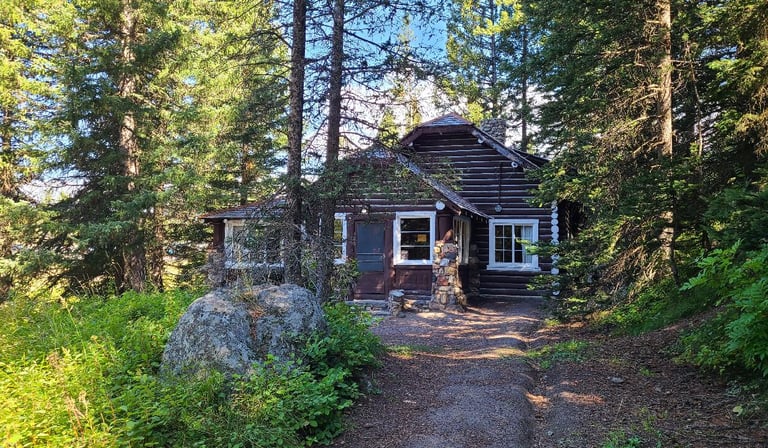

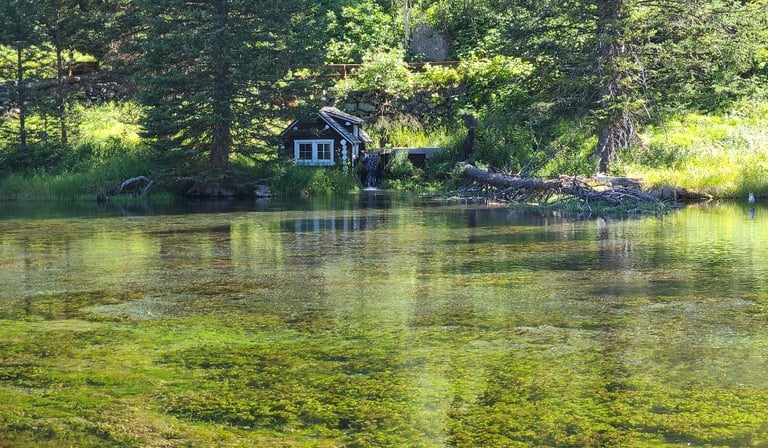

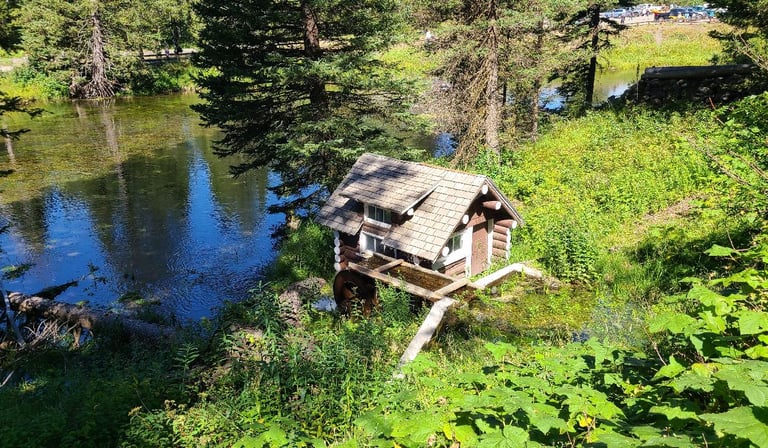

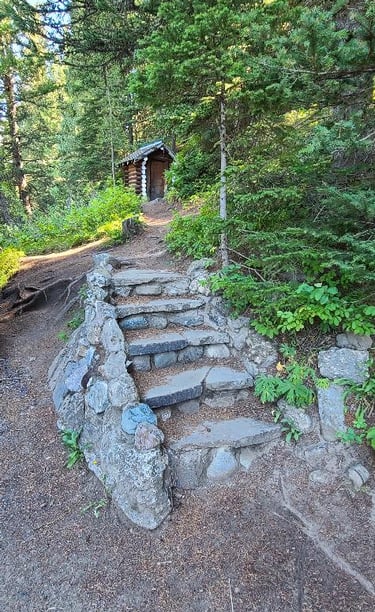

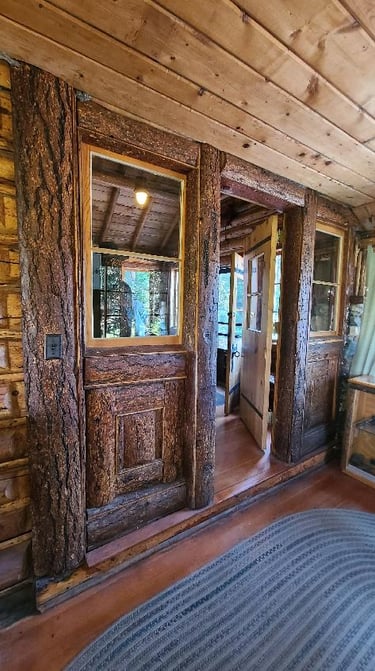

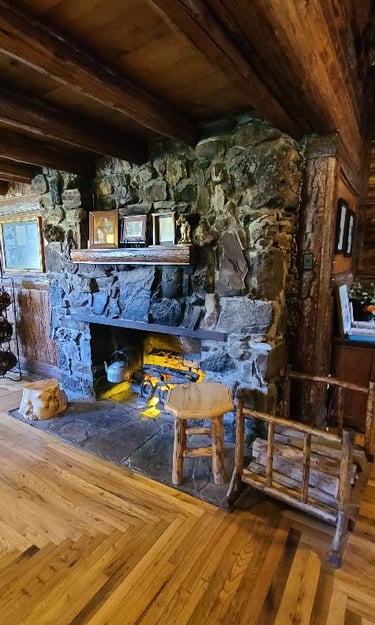

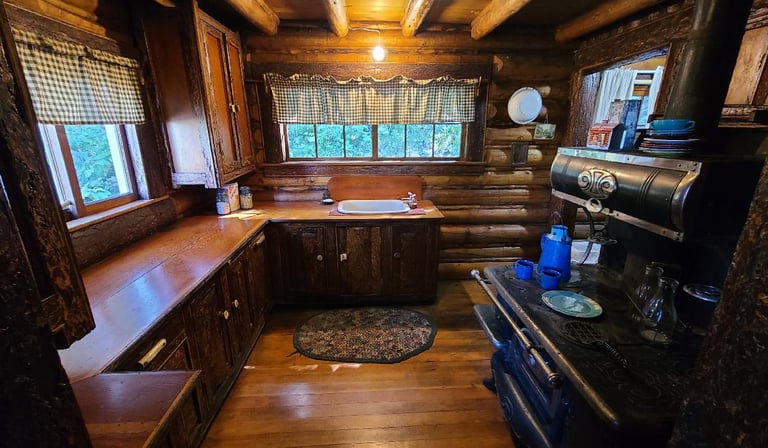

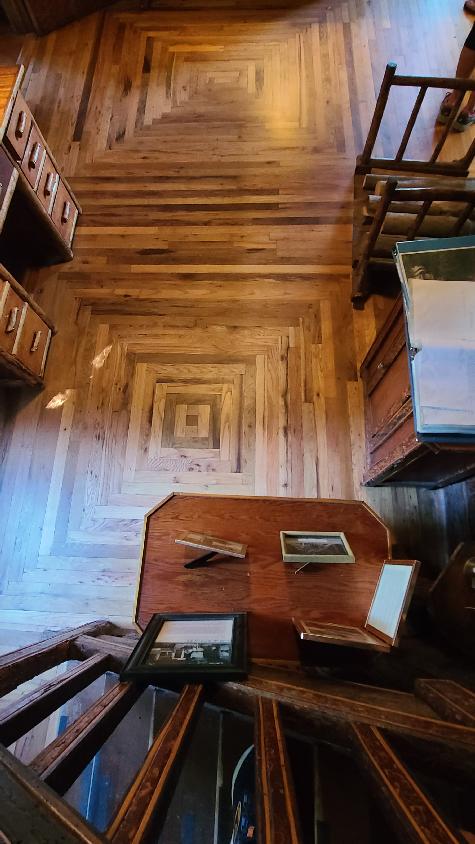

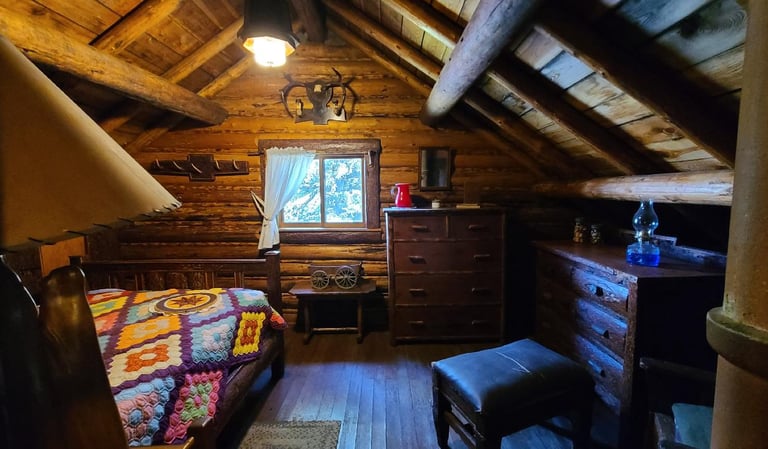

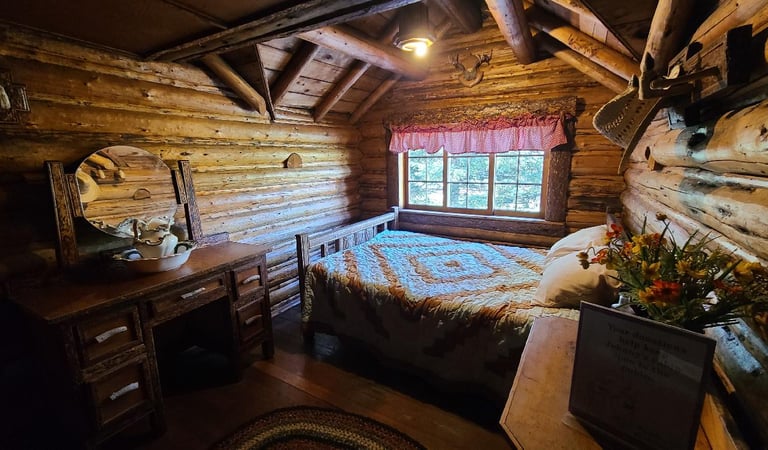

Down the road a little ways is Warm River Spring. Once we got there, we saw the spring gushing from the side of the canyon about 40 feet above the river. I found it mesmerizing to see it cascading down the slope until it reached the river. Its flow is enough to turn the small creek above it into a proper river. Only Big Springs has more outflow to the surface. The super clear water comes out of the ground at the same constant temperature of 52 degrees, so it too never freezes. A fish hatchery has operated at this location off and on since 1908, but ceased operations in 1973. The managers cabin was built by the CCC in 1938. The house and a couple fishery buildings still remain.
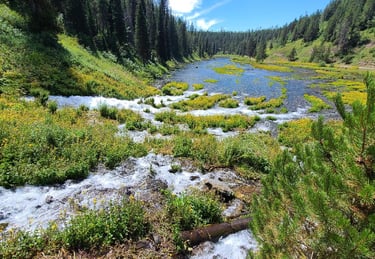

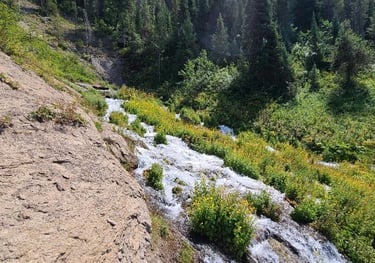


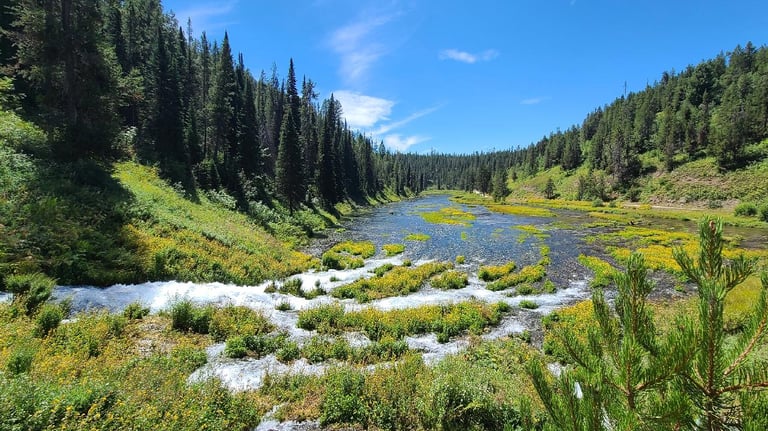

For dinner tonight, Tom is whipping up some concoction of pasta, with roast turkey, broccoli, and carrots in a lemon butter sauce! It should go really well to warm us up on this gloomy, cold day. He's getting all that done while playing fetch with Suki, she is full of it tonight!
Share your comments on Facebook or email us at roadfronts@gmail.com
Subscribe for monthly updates
Current location:
